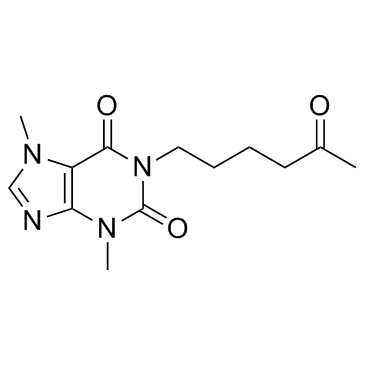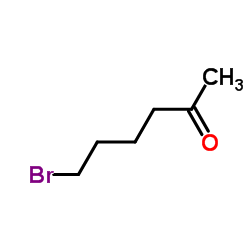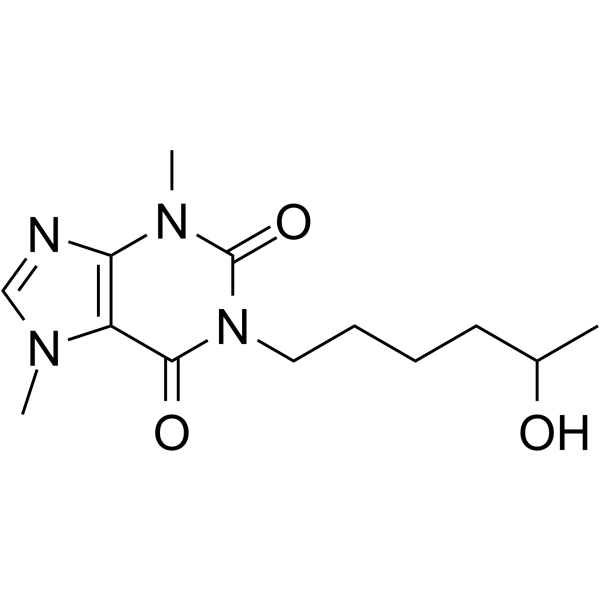6493-05-6
| Name | Pentoxifylline |
|---|---|
| Synonyms |
Azupentat
3,7-dimethyl-1-(5-oxohexyl)purine-2,6-dione 3,7-Dimethyl-1-(5-oxohexyl)-3,7-dihydro-1H-purine-2,6-dione 1H-Purine-2,6-dione, 3,7-dihydro-3,7-dimethyl-1-(5-oxohexyl)- EINECS 229-374-5 Durapental Agapurin Retard Trental Pentoxifylline PTX Rentylin Pentoxil MFCD00063379 Oxpentifylline |
| Description | Pentoxifylline is a competitive nonselective phosphodiesterase inhibitor.Target: PDEPentoxifylline is a competitive nonselective phosphodiesterase inhibitor which raises intracellular cAMP, activates PKA, inhibits TNF and leukotriene synthesis, and reduces inflammation and innate immunity. In addition, pentoxifylline improves red blood cell deformability, reduces blood viscosity and decreases the potential for platelet aggregation and thrombus formation. Pentoxifylline is also an antagonist at adenosine 2 receptors [1]. Pentoxifylline is generally well tolerated. Based on the totality of the available evidence, it is possible that pentoxifylline could have a place in the treatment of IC as a means of improving walking distance and as a complimentary treatment assuming all other essential measures such as lifestyle change, exercise and treatment for secondary prevention have been taken into account [2]. Pentoxifylline reduce AST and ALT levels and may improve liver histological scores in patients with NALFD/NASH, but did not appear to affect cytokines. Large, prospective, and well-designed randomized, controlled studies are needed to address this issue [3]. |
|---|---|
| Related Catalog | |
| References |
| Density | 1.3±0.1 g/cm3 |
|---|---|
| Boiling Point | 531.3±56.0 °C at 760 mmHg |
| Melting Point | 98-100°C |
| Molecular Formula | C13H18N4O3 |
| Molecular Weight | 278.307 |
| Flash Point | 275.1±31.8 °C |
| Exact Mass | 278.137878 |
| PSA | 78.89000 |
| LogP | 0.32 |
| Vapour Pressure | 0.0±1.4 mmHg at 25°C |
| Index of Refraction | 1.621 |
| Storage condition | Store at RT |
| Water Solubility | H2O: ≥43 mg/mL |
CHEMICAL IDENTIFICATION
HEALTH HAZARD DATAACUTE TOXICITY DATA
MUTATION DATA
|
| Symbol |

GHS07 |
|---|---|
| Signal Word | Warning |
| Hazard Statements | H302 |
| Precautionary Statements | P301 + P312 + P330 |
| Personal Protective Equipment | dust mask type N95 (US);Eyeshields;Gloves |
| Hazard Codes | Xn |
| Risk Phrases | R22 |
| Safety Phrases | S36 |
| RIDADR | NONH for all modes of transport |
| WGK Germany | 3 |
| RTECS | XH2475000 |
| HS Code | 2933990090 |
|
~% 
6493-05-6 |
| Literature: Journal of the Chemical Society - Perkin Transactions 1, , # 6 p. 677 - 680 |
| Precursor 2 | |
|---|---|
| DownStream 1 | |
| HS Code | 2933990090 |
|---|---|
| Summary | 2933990090. heterocyclic compounds with nitrogen hetero-atom(s) only. VAT:17.0%. Tax rebate rate:13.0%. . MFN tariff:6.5%. General tariff:20.0% |



